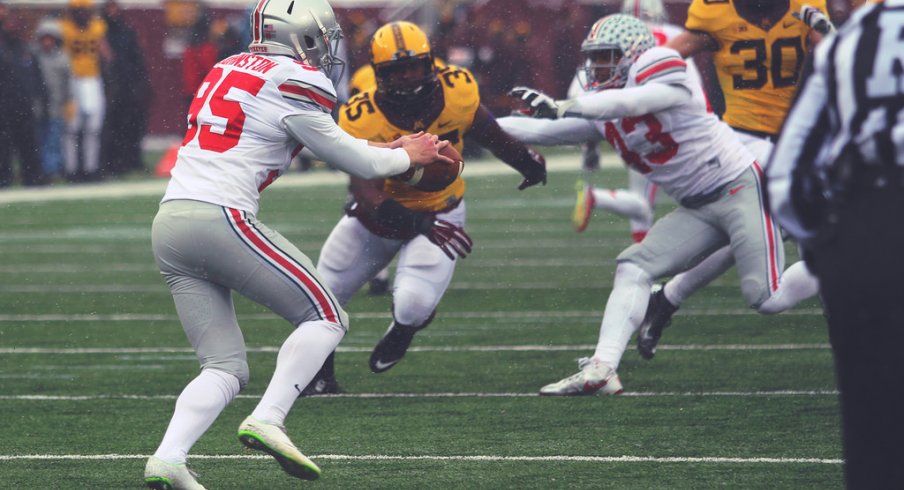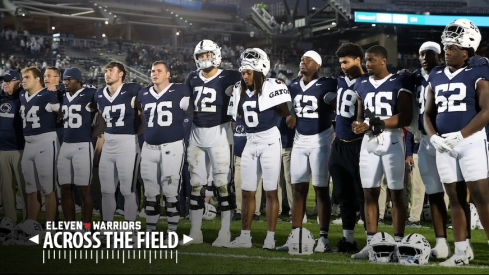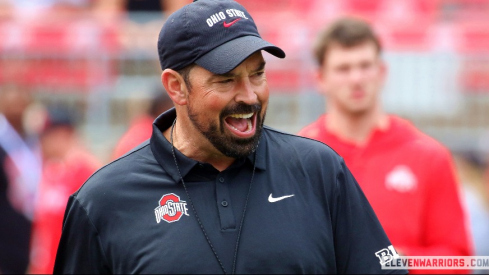When Ohio State defeated Oregon in the national championship game, there were quite a few reasons: Ezekiel Elliott running wild, consistent defensive pressure, the Slobs pushing people around and so on. One of the largest factors, though, wasn't reflected in the box score.
In the championship game, Ohio State and Oregon each had 13 meaningful possessions. On those possessions, the Buckeyes had a 10-yard field position advantage; Ohio State's average drive began on its 31-yard line, compared to the 21-yard line for Oregon. That field position edge suppressed Oregon's potent offense and neutralized a minus-three turnover margin on the way to a championship win.
On the season, the Buckeyes had the fifth-best field position edge in the country. Excluding possessions in garbage time, Ohio State started an average drive from the 33.6-yard line, top-10 nationally, while opponents started an average drive from their own 25.6-yard line, best in the country.
In the abstract, a eight-yard difference in field position is hard to appreciate. Specific examples are more helpful.
In the season opener against Navy, Ohio State's first possession from the 25 ended in a four-and-out. Cameron Johnston boomed a punt deep, and Devin Smith covered it at Navy's one-yard line. When Navy punted back, the Buckeyes forced a quick rugby-style kick which landed out of bounds at the OSU 43-yard line. On the ensuing drive, Sean Nuernberger hit a 46-yard field goal to go up 3-0.
If the Buckeyes' field position were any worse on those three drives, they would have punted and lost that field goal. Three points may not seem important in a game the Buckeyes won by 17, but it changed the tenor of the game. Otherwise, Navy would have been up 14-3 in the third quarter with the ball, and a two-possession deficit to Navy's clock-killing offense is not a position any team wants to be in.
Only once, in the Sugar Bowl, did the Buckeyes cede a significant field position edge to the opponent. Ohio State was routinely pinned deep, with an average drive starting at the OSU 11-yard line. That was the work of Alabama punter J.K. Scott, the national leader in net yards per punt, who pinned the Buckeyes inside the 10 five times and blasted a 73-yarder.
As long as the Buckeyes can avoid freaks of nature like J.K. Scott, their punt return game should improve.
In 2014, Jalin Marshall and Dontre Wilson split time at punt returner. Marshall received more punts as the year went on and was more successful, with an average return of 11.8 yards to Wilson's 9.7. Marshall will likely return more punts in 2015, with more experience in fielding the ball cleanly.
Ever since Ted Ginn left, the Buckeyes have been searching for a dynamic kick returner. Dontre Wilson and Curtis Samuel were the primary returners last year; Wilson returned 22 kickoffs for a 24 yard average, while Samuel returned 12 kickoffs for a 20.5 yard average. They will again be the primary returners, and Wilson can be a difference-maker if he shows more awareness of open lanes and using blockers.
Our Kyle Jones touched on Ohio State's excellent punt coverage and kick coverage units, and the stats bear out their influence. Opponents began drives within their own 20-yard line 32 percent of the time, and only 8.1 percent of opponents started drives in Ohio State territory, mostly the result of turnovers.
Ohio State's punt coverage team will be fine in 2015, since it returns Cameron Johnston as one of the country's best punters. Kick coverage may be a question mark; it loses kickoff specialist Kyle Clinton and exceptional special teamers like Devin Smith and Evan Spencer. Duke transfer Jack Willoughby will likely be the new kickoff specialist, and it will be important for him to angle his kicks just right for the Buckeyes' compacted coverage.
The Buckeyes begin the season at Virginia Tech, the opponent who best took advantage of strong field position against Ohio State. Four of the Hokies' best starting field positions ended in touchdowns, and the fifth was a missed field goal that could have iced the game.
Ohio State needs its special teams to mesh from day one; under the guidance of special teams coordinator Kerry Coombs, the odds are good that they once again give the Buckeyes an elite field position advantage.


